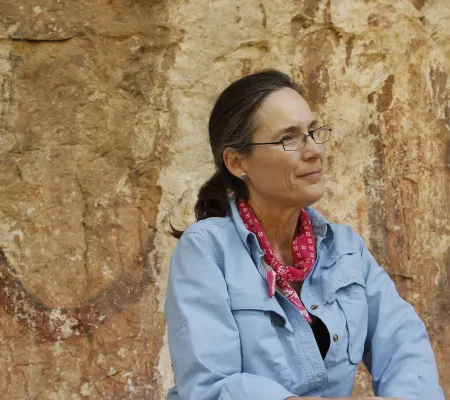The Lower Pecos Canyonlands of southwest Texas and Coahuila, Mexico house some of the most spectacularly complex rock art panels of the ancient world. Approximately 4000 years ago, foragers began transforming this region into a painted landscape. Perhaps the greatest of these masterpieces is the White Shaman mural. After more than twenty years of documentation and analysis, Boyd discovered that the White Shaman mural features a pictorial creation narrative communicating core cosmological and mythological concepts that were later manifested among Mesoamerican agriculturalists. Patterns in the imagery equate in detail to the myths and rituals of Uto-Aztecan-speaking peoples, most notably the ancient Nahua and the present-day Huichol. The identification of these core concepts in the rock art suggests that a shared ideological universe was firmly established among foragers living in the Lower Pecos by 2000 BCE.
Carolyn Boyd is the Shumla Endowed Research Professor in the Department of Anthropology at Texas State University. She is the founder of a nonprofit organization, Shumla Archaeological Research and Education Center, which was established in 1998 to preserve the oldest known “books” in North America – the rock art of the Lower Pecos Canyonlands in southwest Texas and Coahuila, Mexico. Currently, she is serving as research advisor for the Alexandria Project, a baseline documentation project of over 300 rock art sites in the Lower Pecos region.


